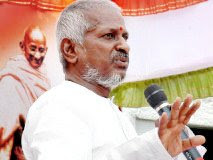When Raaja sir has made His first trip to France {on 19-09-1983 through Airfrance} to meet the great french composer and arranger - Paul Mauriat, Raaja sir had specially composed a three piece record composition.
After hearing that composition, Paul Mauriat has appreciated the outcome and also, he proclaimed that it was the first such an attempt.
Actually, it was the same piece - Mad Mod Mood Fugue {2 minutes 03 seconds}. Later this composition has paved the way for the album - "How to name it?"
Fugue is a music concept, which supposed to be originated from the contrapuntal family, however, it differs from other contrapuntal idioms by: A main melody was played and it would be responded by counter-melody at different pitch. It is need not to be a factor of overlapping same melody with regular interval.
BTW, in chorale fugue, main melody will be replicated with two successive voices and fourth voice enters against the first/main melody.
This concept differs with instrumental fugue, I reckon. In canon, the complete main melody will be replicated by follower melody; however, it does not followed in Fugue.
May be a main melody was followed by its follower melody to some extent can called as "Fuga canonica".
Normally, at pre-baroque era, fugal work is performed with voices alone. Later, it had accompainment of instrument. However, Bach's Bourree in e-minor was written for lute.
Coming back to Mad Mod Mood Fugue:
Raaja sir's Mad Mod Mood Fugue is interwoven with three melodies. One violin plays the 15th melakartha raaga Mayamalavagowla and reportedly, 2nd violin plays the counter-melody of Bach's Bourree in e-minor and a bassguitar as bassline to form Trio structure.
Trio is a composition, which is written for three voices and instruments performed by three persons. Here, only 3 instruments play their own melodies.
I personally feel that this three piece orchestra movement is alike Allegretto {a moderately quick tempo} - Allegro {a quick, lively tempo} – Allegretto. {eh?}
At their initial stage, all the three instruments play their own melody without any botheration among themselves, after the 1st minute; there is a fuss among the two violins to consider about their melodies with each other. At 1:20, array of string instruments were more alike Allegro movement {a quick, lively tempo}, wherein western violin’s call was responded by Indian classical violin with bass accompaniment for main melody. Eventually, all the 3 instruments try to sustain their original melody. Subham!
always
~Raaja rules!
Sunday, July 26, 2009
Subscribe to:
Post Comments (Atom)

No comments:
Post a Comment